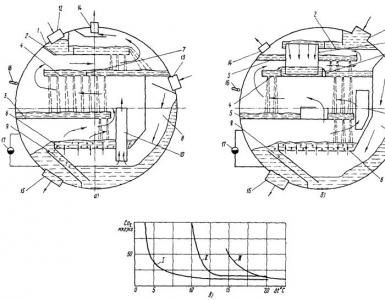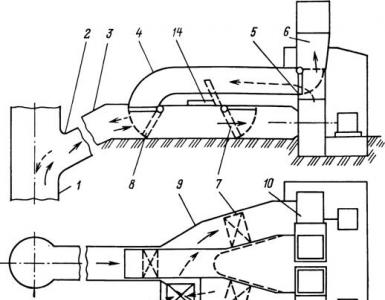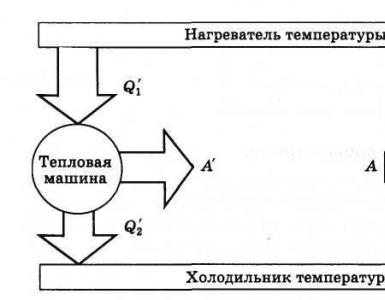Solid fuel boiler operator
Pension provision for drivers (stokers) of a coal-fired boiler house
In accordance with subparagraph 2 of paragraph 1 of article 27 of the Federal Law "On labor pensions in the Russian Federation" dated 12/17/2001. 173-FZ, an old-age labor pension is assigned to men upon reaching the age of 55 and women upon reaching the age of 50 if they have worked in jobs with difficult working conditions for at least 12 years 6 months (men) and 10 years (women) and have insurance at least 25 and 20 years of experience, respectively.
In the event that these persons have worked at the listed jobs for at least half of the established period and have the required length of insurance experience, they are assigned a labor pension with a decrease in age (for men - 60 years, for women - 55 years) by one year for every 2 years and 6 months of such work for men and for every 2 years of such work for women.
When establishing early pensions on this basis, List No. 2 of industries, jobs, professions, positions and indicators with harmful and difficult working conditions, approved by the Decree of the Cabinet of Ministers of the USSR of 01.26.1991, is applied. No. 10. Section XXXIII “General Professions” of the said List provides for boiler house operators (stokers) (on coal and oil shale), including those employed in ash removal.
For the period up to January 1, 1992. List N 2 of industries, workshops, professions and positions, work in which gives the right to a state pension on preferential terms and in preferential amounts, approved by the Decree of the Council of Ministers of the USSR of August 22, 1956, can be applied. N 1173.
Section XXXII "General Professions" of this List provides for machinists (stokers) employed in the maintenance of industrial boilers and industrial furnaces.
When determining the right to preferential pension provision for boiler house drivers (stokers), the following must be borne in mind. The driver (fireman) of the boiler room is the full name of the profession (ETKS; issue 1). In accordance with the ETKS, the driver (fireman) of the boiler house maintains hot water and steam boilers, both in the boiler room and separately located (including on steam railway cranes), as well as heating boiler installations or crumpled steam stations located in the service area of the main aggregates. All of these jobs are eligible for retirement benefits. A prerequisite for assigning a pension under List No. 2 to a boiler engineer (fireman) is the maintenance of solid fuel boilers (coal and oil shale).
This circumstance must be confirmed by documents in each specific case. Workers who are engaged in the maintenance of hot water and steam boilers (including in boiler rooms) operating on liquid and gaseous fuels or with the help of electric heating are assigned the name of the profession "Boiler Operator", which is not provided for in Lists No. 1 and No. 2.
To determine the right to preferential pension provision for the driver (fireman) of the boiler house, it does not matter the heat output of hot water and steam boilers, which can be either less than 3 Gcal / h, or more than 130 Gcal / h, as well as the purpose for which steam and water are produced (for technological or household needs).
The work of the boiler house (boilers) is usually seasonal. The period when the boiler house (boiler) is not working, and the machinists (stokers) are engaged in repair work, is not counted as a special seniority. Drivers (stokers) of boiler houses, who, along with maintenance of hot water and steam boilers, perform ash removal or only remove ash from furnaces and boiler bunkers, also enjoy the right to a pension under List No. 2. Along with the drivers (stokers) of boiler houses in List No. 2 (section XXXIII) firemen of technological furnaces are provided. An old-age labor pension is assigned to them ahead of schedule, provided that they are employed in industries where the main workers enjoy the right to preferential pension coverage.
Qualifications - Engineer (fireman) of the boiler room of the 2nd category
The status of the document is "valid".
Complete general secondary education and on-the-job training, with no work experience requirements.
Knows and applies: the principle of operation of serviced boilers, nozzles, steam pipes and ways to regulate their work; structure of furnaces of steam boilers, slag and ash bunkers; the composition of heat-insulating masses and the main methods of thermal insulation of boilers and steam pipelines; purpose and conditions for the use of simple and medium complexity instrumentation; the structure of mechanisms for the preparation of pulverized fuel, tools and devices for cleaning nozzles and ash and slag removal; the structure and modes of operation of the equipment of heat storage boiler installations or crumpled steam stations, the rules for cleaning grates, furnaces, boilers and the smoke box of steam locomotives; allowable pressure and water level in the locomotive boiler during cleaning; the influence of atmospheric air on the condition of the walls of the furnace and fire box; the procedure for filling the furnace; basic properties of ash and slag; order of movement on the tracks and roads of railway cranes; rules for planning slag and ash dumps.
Description of work, tasks and job responsibilities
Serves hot water and steam boilers with a total heat output of up to 12.6 GJ / h (up to 3 Gcal / h) or serves in separate boiler rooms water or steam boilers with a boiler heat output of up to 21 GJ / h (up to 5 Gcal / h), that run on solid fuels. Serves boilers of steam railway cranes with a lifting capacity of up to 25 tons. Kindles, starts up, stops boilers and supplies them with water. Grinds fuel, loads and drills the boiler furnace. Regulates fuel combustion. It monitors the water level in the boiler, the steam pressure and the temperature of the water supplied to the heating system with the help of instrumentation. Starts, stops pumps, motors, fans and other auxiliary mechanisms. Cleans fittings and appliances of the boiler. Serves heating network boiler installations or crumpled steam stations, which are located in the service area of the main units, with a total heat load of up to 42 GJ/h (up to 10 Gcal/h). Purifies the mint steam and deaerates the water. Maintains the required pressure and temperature of water and steam. Participates in flushing, cleaning and repairing the boiler. Manually removes slag and ash from the furnaces and bunkers of steam and hot water boilers of industrial and municipal boiler houses and blowing gas generators, as well as from the grate for furnaces, boilers and blowing steam locomotives. Plans for slag and ash dumps.
Instruction on labor protection for the driver-fireman of a solid fuel boiler house IOT-5
on labor protection for the driver-fireman of a solid fuel boiler house
1.1. Men under the age of 18 may be allowed to work independently as a driver (fireman) for maintenance of a boiler plant after passing a medical examination in accordance with the established procedure, passing an exam according to the program for a driver (fireman) of a solid fuel boiler plant and obtaining an appropriate certificate. Re-testing of this knowledge should be carried out at least once a year.
1.2. Upon admission to work and during work, the following briefings should be carried out with each employee: introductory, primary at the workplace, repeated at the workplace (at least 1 time in 6 months), and in case of production necessity and circumstances due to regulatory acts on labor protection conduct unscheduled and targeted briefings.
1.3. In the course of work, the driver (fireman) is affected by the following harmful and dangerous factors:
The physical severity of labor;
Increased temperature, humidity and gas contamination in the boiler room;
The probability of explosion during the operation of pressure vessels;
1.4. The following personal protective equipment must be issued to the driver (fireman):
Suit (jacket, trousers) made of heat-resistant, non-heat-conducting fabric;
Boots leather on a thickened sole;
Protective helmet made of heat-resistant, non-heat-conducting fabric;
Overalls and a helmet-mask with a hose of the required length in case of work in the furnace.
1.5. The driver (fireman) must comply with the work and rest regime established in the educational institution, as well as fire safety rules. When operating a solid fuel boiler plant, there must be one foam fire extinguisher for every two furnaces in the boiler room. In addition - a box of sand, a shovel, a fire hydrant equipped with a fire hose (barrel). There must be a dedicated and designated area for smoking. The driver (fireman) must be familiar with the fire safety instructions in force in the institution.
1.6. The head of the educational institution is obliged to obtain a permit for the operation of boilers in accordance with the established procedure, timely eliminate all defects in the boiler and the piping system, annually check the instrumentation of the boiler equipment at certain times, and also provide the driver (fireman) with the tools necessary for work ( shovel, scoop, containers, a lantern with a glass bulb in case of a power outage).
1.7. A telephone or an alarm system must be installed in the boiler room to communicate with the head and representative of the administration of the institution.
1.8. The driver (fireman) must clearly know where the first aid kit with medicines and dressings is located in the boiler room, be able to provide first aid to victims of various types of damage to the body (bruises, wounds, thermal burns, etc.) using techniques and methods given in the instructions for first aid, operating in the institution.
1.9. It is forbidden to instruct the driver (fireman) servicing the boiler to perform any work not related to servicing the boilers while on duty.
1.10. In the event of an accident, the victim must be immediately provided with first aid in accordance with the instructions for first aid. The situation at the scene of the accident must be kept unchanged for an objective investigation of the accident, if this does not threaten the life and health of other persons and does not lead to an accident.
1.11. Knowing and fulfilling the requirements of this Instruction is the duty of the driver (fireman), and their non-compliance entails the types of liability established by the legislation of the Russian Federation (disciplinary, material, criminal).
2. Safety requirements before starting work
2.1. Before starting work, the driver (fireman) must put on the personal protective equipment that is due to him according to the standards so that there are no hanging, fluttering ends.
2.2. When starting work, the driver (fireman) must accept boilers and boiler room equipment from the previous shift; personally inspect and check their serviceability (the position of taps and valves, the condition of safety devices, etc.).
2.3. When inspecting the boiler, electric lighting with a voltage of no higher than 12 V should be used. It is forbidden to use kerosene or other lamps with flammable liquids, as well as torches.
2.4. The driver (fireman) is obliged to record the shift reception in the logbook. During his duty, the driver (fireman) is responsible for the condition of the boiler room equipment and for the normal operation of the boilers.
2.5. The driver (fireman) should not allow unauthorized persons into the boiler room.
2.6. The boiler room must have a constant supply of air to maintain normal combustion and timely ventilation to avoid gas poisoning.
3. Safety requirements during operation
3.1.During the operation of the boilers, the doors of the boiler room, if there are people in it, must not be closed. The exit from the boiler room in winter must be cleared of snow and ice.
3.2. Kindling of the boiler must be carried out only with the permission of the head of the educational institution.
3.3. If the boiler is fired up again, it is necessary:
Before closing the manholes and hatches of the boiler, it is necessary to make sure that there are no people and foreign objects inside the boiler and gas ducts;
Check the condition of the boiler lining, the presence and serviceability of fittings, instrumentation, make-up, feed and circulation pumps, as well as explosive valves of the furnace and gas ducts;
Check the presence of the necessary pressure in the supply water line according to the pressure gauge, the serviceability of the make-up valve and the check valve on the make-up line.
3.4. Repair of boiler room equipment and transportation of fuel may be allowed to an employee only if there are two or more drivers (stokers) in the shift.
3.5. Kindling of the boiler should be carried out with open valves between the boiler and the system, gradually with the circulation pump turned on, while observing the readings of instrumentation (thermometers, pressure gauges).
3.6. The driver (fireman) must not leave the boiler unattended if there is fire in the furnace. Each time leaving the boiler room, the driver (fireman) is obliged to stop the blowers and smoke exhausters.
3.7. During the operation of the hot water boiler, the driver (fireman) is obliged:
Constantly maintain the required temperature of the water in the heating system;
Monitor the filling of the system with water;
Check the operation of safety valves at least 1 time per shift, monitor the operation of circulation pumps, motors, fans;
If malfunctions are found, try to restore the normal course of work in compliance with personal safety measures. In the absence of such an opportunity, inform the person responsible for ensuring the safety of the boiler room.
3.8. During operation, the driver (fireman) must comply with the following basic safety requirements:
Do not turn on electrical equipment in the absence of protective equipment (insulating stands, protective grounding, etc.);
Do not operate the equipment of the boiler room in the absence of a fence for moving and rotating parts (belts, couplings, shafts, etc.)
Beware of burns when removing slag and coal from the furnace, when pouring hot slag and when throwing the flame out of the furnace;
If smoke passes from the boiler into the boiler room, stop the boiler, ventilate the room and find out the reason for the cessation of draft.
3.9. If it is necessary to stop the boiler as soon as possible after the combustion of fuel (coal) in the furnace has stopped, remove the heat from the grate, leaving the damper and furnace doors open. Heat and ash removed from the firebox, carefully pour water;
3.10. It is forbidden to carry out kindling with faulty measuring and safety devices;
3.11. Works on the internal cleaning of boilers and chimneys should be carried out only by two people, to help each other. The admission of people into the boiler, furnace, chimneys, installation and removal of plugs, opening of valves must be carried out with the permission of the person responsible for the operation of the boiler room, with entry in the logbook.
3.12. Before opening the furnace door, stop blowing so that the flame is not thrown out of the furnace;
3.13. In the event of a power outage, immediately turn on emergency lighting and turn off all electric motors.
3.14. The driver (fireman) is obliged to immediately stop the boilers and notify the person responsible for working in the boiler room in cases specifically specified in the job description.
4. Safety requirements in emergency situations
4.1. In the event of an emergency in the boiler room or another emergency outside the boiler room, but in the immediate vicinity of it, the driver (fireman) is obliged to report it to the immediate supervisor or representative of the administration of the institution, in case of fire - to the fire department. The driver (fireman) himself must remain at his post and not leave the boiler room.
4.2. If the emergency situation is related to the boiler room, then after sending messages (see above), the personnel must take measures to extinguish the fire with the available fire extinguishing equipment, without stopping monitoring the boilers.
4.3. For the most possible types of emergency situations in the boiler room, emergency action plans should be developed and studied by the personnel in advance.
4.4. If it is impossible to quickly extinguish the fire and it threatens the boilers, it is necessary to stop the boilers in an emergency, while it is necessary to pour water on the boilers intensively, drain the water from the hydraulic seal, simultaneously directing steam into the atmosphere, let water into the system of hot water boilers and take measures to extinguish hotbed of fire.
4.5. Boiler room personnel must know the location of property, fire extinguishing equipment in the boiler room and be able to use them.
4.6. The driver (fireman) must be able to provide first aid to victims in emergency situations; the type of assistance and methods of rendering depends on the nature of the damage to the victims.
4.8. In case of various types of injuries, the victims, as a rule, are delivered to medical institutions. The exception is cases of full preservation of the normal functioning of the human body, without loss of ability to work.
5. Safety requirements at the end of work
5.1. At the end of the shift, if the shifter did not show up for work, the driver (fireman) must continue to work, notifying the immediate supervisor or representative of the administration of the institution of the absence of the shifter.
2. When the shift is handed over, the driver (fireman) is obliged to inform the shifter about all the malfunctions noticed while working in the boiler room. The delivery of the shift must be recorded in the logbook.
5.3. When accepting and handing over a shift, both drivers (firemen) sign in the log, and the condition of the equipment should be specially noted.
5.4. After that, the driver (fireman) must take a shower with the obligatory use of neutral detergents.
5.5. Personal protective equipment must be processed and placed in a locker for special clothing.
Reviews of Pandia.ru services
Personnel training and development

Law
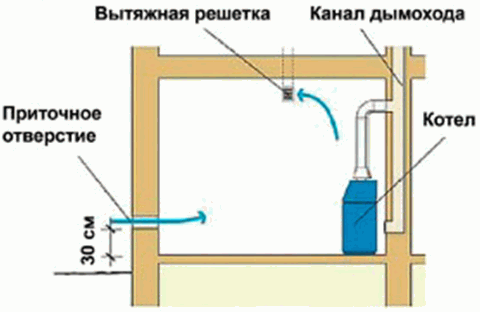
Related projects:
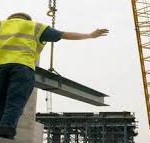
Home
reference Information
Technique

Education and science
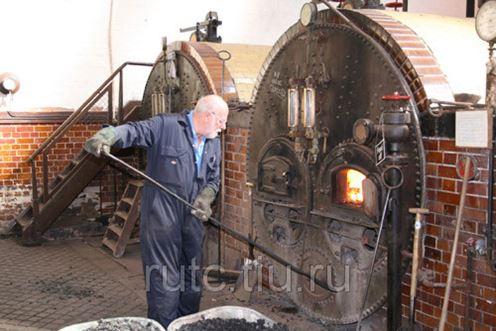
Business and Finance
Business
Leisure
Technology
Infrastructure
The science
Goods
Services
The opinion of the editors may not coincide with the opinions of the authors.
Boiler operator (fireman)
§ 194. Engineer (fireman) of the boiler room (2nd category)
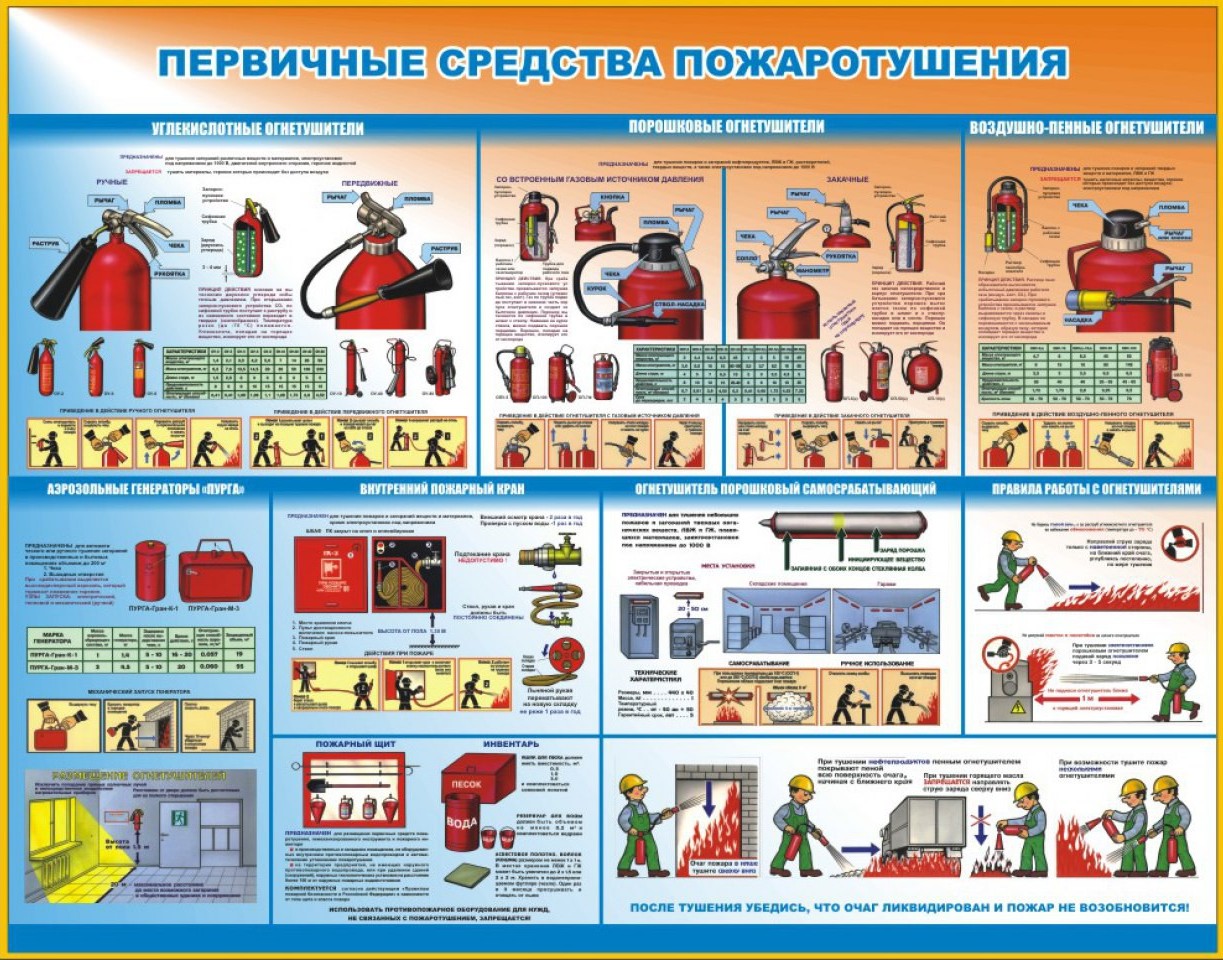
Job Description. Maintenance of hot water and steam boilers with a total heat output of up to 12.6 GJ / h (up to 3 Gcal / h) or maintenance in the boiler room of individual hot water or steam boilers with a boiler heat output of up to 21 GJ / h (up to 5 Gcal / h), operating on solid fuel. Maintenance of boilers of steam railway cranes with a lifting capacity of up to 25 tons. Kindling, starting, stopping boilers and supplying them with water. Crushing of fuel, loading and skimming of the boiler furnace. Fuel combustion control. Monitoring of the water level in the boiler, steam pressure and temperature of the water supplied to the heating system using instrumentation. Starting, stopping pumps, motors, fans and other auxiliary mechanisms. Cleaning of fittings and appliances of the boiler. Servicing of heating network boiler installations or crumpled steam stations located in the service area of the main units, with a total heat load of up to 42 GJ/h (up to 10 Gcal/h). Purification of crumpled steam and deaeration of water. Maintenance of the set pressure and temperature of water and steam. Participation in washing, cleaning and repairing the boiler. Manual removal of slag and ash from furnaces and bunkers of steam and hot water boilers of industrial and municipal boiler houses and blowing gas generators, as well as from grates, furnaces, boilers and blowing steam locomotives. Layout of slag and ash dumps.
Must know: the principle of operation of serviced boilers, nozzles, steam and air pipelines and methods for regulating their operation; installation of furnaces for steam boilers, slag and ash bins; the composition of heat-insulating masses and the main methods of thermal insulation of boilers and steam pipelines; purpose and conditions for the use of simple and medium complexity instrumentation; arrangement of mechanisms for the preparation of pulverized fuel, tools and devices for cleaning nozzles and ash and slag removal; device and modes of operation of the equipment of heat network boiler installations or crumpled steam station; rules for cleaning grates, furnaces and boilers of the smoke box of steam locomotives; permissible pressure and water level in the steam locomotive boiler during cleaning; the influence of atmospheric air on the condition of the walls of the furnace and fire box; the procedure for filling the furnace; basic properties of ash and slag; the order of movement along the tracks and roads of railway cranes; rules for planning slag and ash dumps.
§ 195. Engineer (fireman) of the boiler room (3rd category)
Job Description. Maintenance of hot water and steam boilers with a total heat output of over 12.6 GJ/h to 42 GJ/h (over 3 to 10 Gcal/h) or maintenance in the boiler room of individual hot water and steam boilers with a boiler heat output of over 21 to 84 GJ/h (over 5 to 20 Gcal/h) operating on solid fuel. Maintenance of boilers on steam railway cranes with a lifting capacity of more than 25 tons or boilers of steam excavators. Starting, stopping, regulating and monitoring the operation of traction and ash removal devices, stoker, economizers, air heaters, superheaters and feed pumps. Servicing of heating network boiler installations or a crumpled steam station located in the service area of the main units, with a total heat load of more than 42 to 84 GJ / h (over 10 to 20 Gcal / h). Ensuring the smooth operation of the boiler equipment. Starting, stopping and switching of serviced units in heat pipelines. Accounting for heat supplied to consumers. Mechanized removal of slag and ash from furnaces and bunkers of steam and hot water boilers of industrial and municipal boiler houses and blowing gas generators. Loading ash and slag using mechanisms into trolleys or wagons with their transportation to a specified place. Monitoring the correct operation of ash and slag removal mechanisms, lifting and transport equipment, alarms, instruments, equipment and fencing devices. Washing away slag and ash with special devices. Participation in the repair of serviced equipment.
Must know: arrangement of the equipment and mechanisms used; methods of rational combustion of fuel in boilers; schemes of heat, steam and water pipelines and external heating systems; the procedure for accounting for the results of equipment operation and heat supplied to consumers; the importance of timely removal of slag and ash for the normal operation of boilers; rules for the maintenance of serviced equipment and ways to eliminate shortcomings in its operation; types of serviced boilers; rules and methods of loading and transporting ash and slag; systems - lubrication and cooling of serviced units and mechanisms; rules for keeping records of the operation of mechanisms and equipment for ash and slag removal; the device of simple and average complexity of control and measuring devices.
§ 196. Engineer (fireman) of the boiler room (4th category)
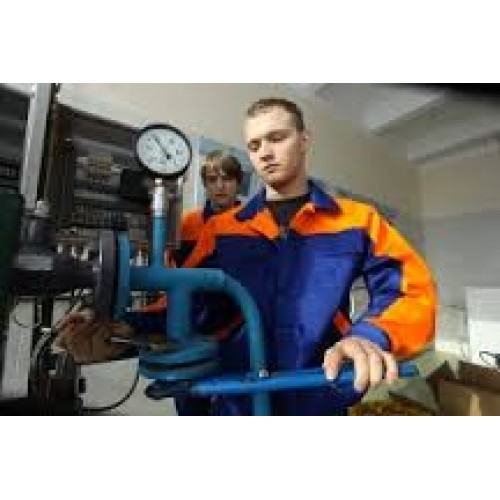
Job Description. Maintenance of hot water and steam boilers with a total heat output of over 42 to 84 GJ/h (over 10 to 20 Gcal) or maintenance in the boiler room of individual hot water and steam boilers with a boiler heat output of over 84 to 273 GJ/h (over 20 to 65 Gcal/h) operating on solid fuel. Monitoring of the water level in boilers, pressure and temperature of steam, water and flue gases using instrumentation. Regulation of operation (load) of boilers in accordance with the steam consumption schedule. Fuel monitoring. Servicing of heating network boiler installations or crumpled steam stations located in the service area of the main units with a total heat load of more than 84 GJ / h (over 20 Gcal / h). Prevention and troubleshooting of equipment.
Must know: device and rules for servicing boilers, as well as various auxiliary mechanisms and fittings of boilers; basic information on heat engineering, various fuel mixtures and the influence of fuel quality on the combustion process and the heat output of boiler units; fuel preparation process; technical conditions for water quality and methods of its purification; causes of malfunctions in the operation of the boiler plant and measures for their prevention and elimination; device, purpose and conditions for the use of complex instrumentation.
§ 197. Engineer (fireman) of the boiler room (5th category)
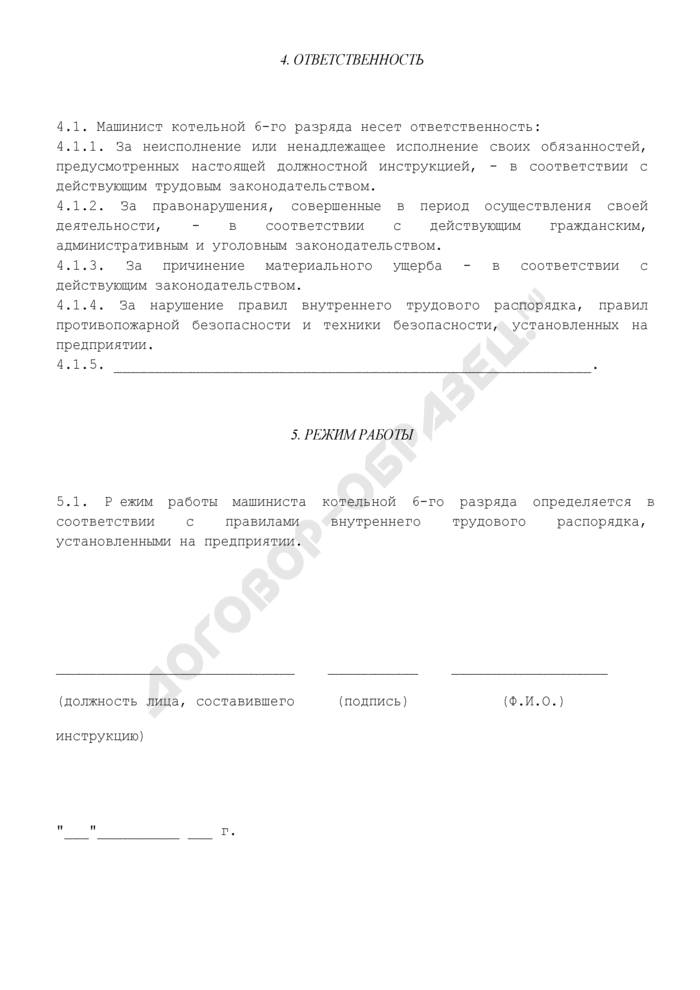
Job Description. Maintenance of hot water and steam boilers with a total heat output of more than 84 to 273 GJ / h (over 20 to 65 Gcal / h) or maintenance in the boiler room of individual hot water and steam boilers with a boiler heat output of more than 273 to 546 GJ / h (over 65 to 130 Gcal / h) h) working on solid fuel. Switching feed lines. Filling and emptying steam lines. Turning on and off the automatic equipment for feeding boilers. Preventive inspection of boilers, their auxiliary mechanisms, instrumentation and participation in scheduled preventive maintenance of boiler units. Acceptance of boilers and their auxiliary mechanisms from repair and their preparation for operation.
Must know: device and principle of operation of hot water and steam boilers of various systems; operational data of boiler equipment and mechanisms; arrangement of automatic control devices; rules for maintaining the operating mode of the boiler room, depending on the readings of the instruments; schemes of pipeline networks and signaling in the boiler room; rules for setting up and regulating instrumentation.
§ 198. Engineer (fireman) of the boiler room (6th category)
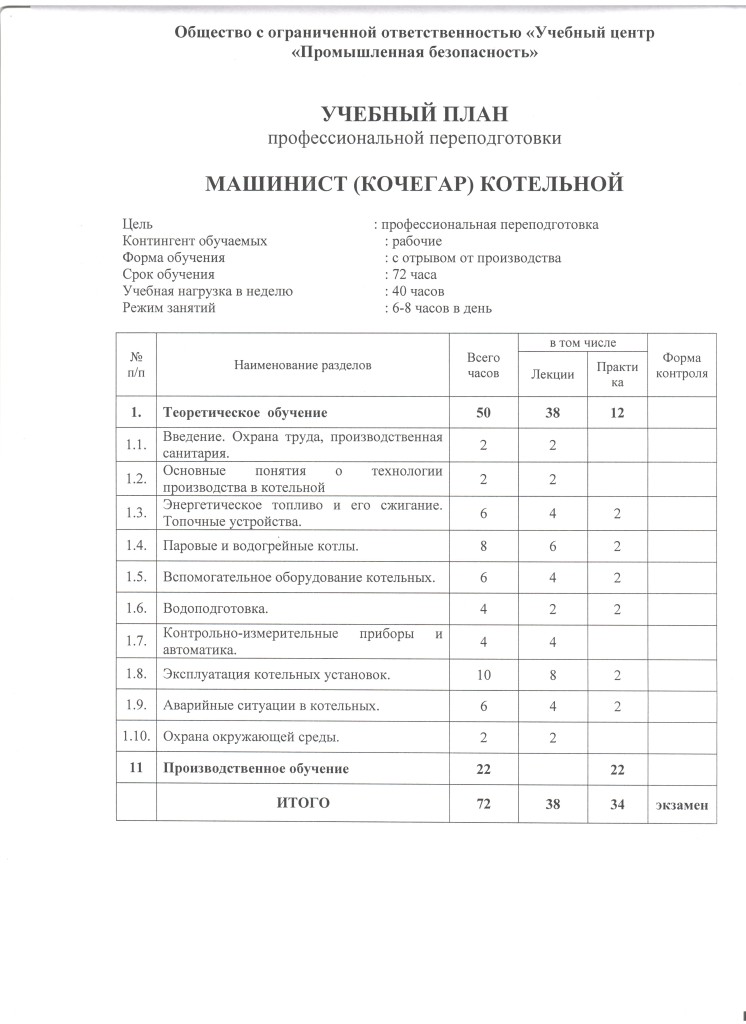
Job Description. Maintenance of hot water and steam boilers of various systems with a total heat output of more than 273 GJ / h (over 65 Gcal / h) or maintenance in the boiler room of individual hot water and steam boilers with a boiler heat output of more than 546 GJ / h (over 130 Gcal / h) operating on solid fuel.
Must know: design features of complex instrumentation and automatic control devices; calorific value and physical properties of fuel; elements of the fuel balance of boilers and its compilation; rules for determining the efficiency of a boiler plant.


